The most important building of the Roman Agora Site.
It is an octagonal tower, made of Pentelic marble. It has a height of 12.10 meters (36 ft 4 in), 3.20 m (10 ft 8in) of side length and a basis diameter of 8.36 m (appr. 25 ft)
It was built around 47 BC by the astronomer Andronicus from Kyrros, a city in northern Syria founded by ancient Macedonians around 300 BC. Andronicus from Kyrros was an architect, specialized in building Sun and Hydraulic Time Measuring Devices. Why this clock was built here is unknown.
On the top of the conic roof there used to be a brazen wind pointer in the form of a Triton, which has been lost. There was an internal hydraulic Time measuring mechanism, now lost, to use when there was no sun. The monument was turned into a Baptisterion during the early Christian years and, later, into an Ottoman praying sacred spot. This saved the monument from the benevolent hands of Lord Elgin who, besides the Parthenon Marbles, was contemplating to transport the whole of this structure to England.
(Photos by Michael Tziotis)
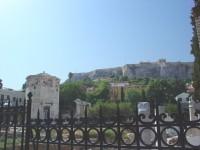
The Winds or Horologion of Andronicos: The monument within the Roman Agora Archaeological Site Enclosure |
|
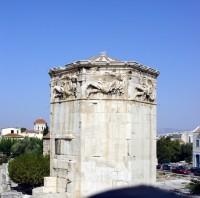
The Winds or Horologion of Andronicos |
|

The Winds or Horologion of Andronicos: Three of the Eight Winds: South, South-East, East
Notos (South). Bearer of rain, he empties a pot of water.
Evros (South East). An bearded old man wrapped in a cloak.
Apeliotis (East). A young man offering grain and fruits. |
|
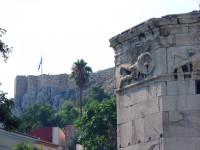
The Winds or Horologion of Andronicos: Kaikias (North East).
He empties a basket of hailstones on the unlucky ones on the surface of the Earth. |
|
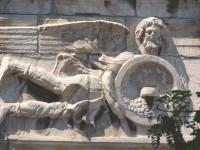
The Winds or Horologion of Andronicos: Another photo of Kaikias (North East wind).
Armed with a basket of hailstones to be thrown on those below. |
|
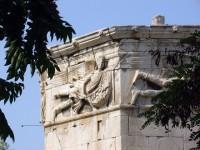
The Winds or Horologion of Andronicos: Apeliotis (East).
A young figure offering grain and fruits. |
|
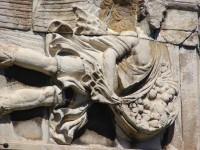
The Winds or Horologion of Andronicos: Another photo of Apeliotis (East wind). |
|
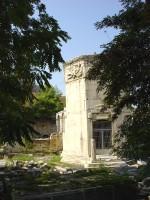
The Winds or Horologion of Andronicos: The Monument with the Door to the North |
|
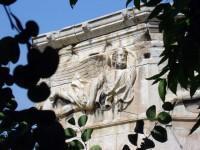
The Winds or Horologion of Andronicos:Evros (South-East Wind) |
|
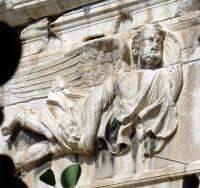
The Winds or Horologion of Andronicos: Evros (South-East Wind) Closeup |
|
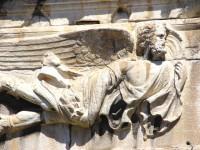
The Winds or Horologion of Andronicos: Another photo of Evros (South East wind).
An old man with beard wrapped in a cloak. |
|
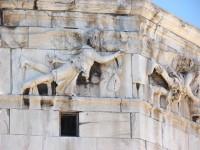
The Winds or Horologion of Andronicos
Boreas and Skiron |
|
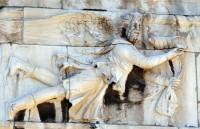
The Winds or Horologion of Andronicos: Boreas (North wind)
Here is Boreas (North wind) blowing his cold winds through his large shell! |
|
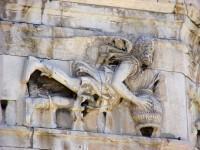
The Winds or Horologion of Andronicos
...followed by Skiron (North West wind) carrying a bronze vessel full with glowing ashes to scatter onto our heads! |
|



